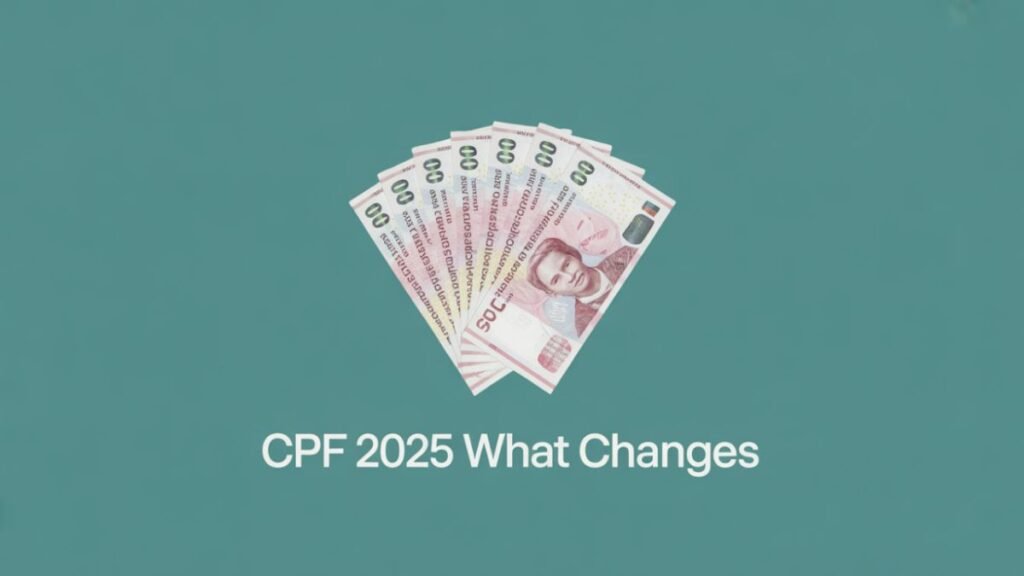The changes in Central Provident Fund that the Singapore government plans to implement in 2025 are going to be really huge and will definitely help boost the financial security of the elderly. Besides, alterations are to be brought into the CPF system which would offer many reliefs to higher-paid employed people and also those from lower-income groups. The overall goal of the overhaul is to arrive at a CPF that is much more sustainable, flexible, and future-ready. So let’s dig a little deeper into the features of the changes in CPF and the implications of these changes on your retirement planning.
Contribution rates to CPF for older employees will be increased.
The increase of 1.5 percent will take effect on January 1, 2025, for employees aged 55 to 65 years. Of this increase, one percentage point will be apportioned to employer contribution and the other half percent will be apportioned to employee contribution.
| Age Group | Total CPF Rate | Employer Share | Employee Share | Change |
|---|---|---|---|---|
| 55 to 60 | 33.5% | 14.5% | 19.0% | +1.5% |
| 60 to 65 | 25.0% | 13.0% | 12.0% | +1.5% |
This is being done so as to allow older people to save through their roles in their last years’ work and improved conditions ahead when they grow old.
Increase in Maximum Salary Ceiling
It will take place starting January 2025 with the hike ceiling of the monthly salary contribution to CPF from S$6,800 to S$7,400 and then on S$8,000 in 2 years. This means contributions under CPF would also scale higher for those in high-income earning brackets.
- January 2025 S$6,800 S$7,400
- January 2026 S$7,400 S$8,000
The Annual Wage Ceiling (AWC) would remain capped at S$102,000, but increasing this monthly cap will still help to maximize savings through CPF.

Special Account (SA)
closure for those above 55 years The SA will be closed for CPM members above 55 years from the midpoint of 2025. The money will be split into two parts:
- To the Full Retirement Sum (FRS) to the Retirement Account (RA).
- The rest will go to the Ordinary Account (OA).
- SA currently earns 4% and OA earns only at 2.5%. This will lead to impotency in interest earnings. Thus, it is imperative for members to top up RA to gain more from their monthly pension.
Higher Retirement Sum (HRS) is now S$426,000.
From 2025, Enhanced Retirement Sum (ERS) within CPF will be raised to S$426,000. The amount is equivalent to four times Basic Retirement Sum (BRS):
- BRS (2025): S$106,500
- FRS (2× BRS): S$213,000
- ERS (4× BRS): S$426,000
Members who enjoy good financial strength can top up for RA while enjoying a higher pension for CPF LIFE.
Extended Matched Retirement Savings Scheme (MRSS) scheme.
The scheme of MRSS has been meant particularly for older adults, especially focusing on those having lower balances with their CPF. In this allocation by the government, dollar-for-dollar matching is done for RA contributions made personally by members.
Changes on 2025:
- Increase in limit for matching from S$600 to S$2,000 each year.
- More relaxed eligibility criteria allowing more beneficiaries.
The aim is that seniors will become more self-reliant under this scheme while improving their retirement incomes.

Effects on CPF LIFE
The shuttering of SA, coupled with raising ERS, will further support the CPF LIFE scheme. CPF LIFE is an income distribution scheme over the years based on every member’s RA balance.
Thus, the changes contribute benefits including:
- Better income during old age every month
- Benefit of higher interest rates through voluntary top-ups
- Equal retirement security for all income groups
Why Should These Changes Be Important?
The population in Singapore increasingly becomes elderly, and future savings will be impacted by inflation. Through these changes in CPF, the Government lays down the foundations for a sustainable, flexible, and inclusive retirement system.
Benefits:
- Greater savings opportunities for older citizens in the closing years of their working lives.
- Improvements in pension subventions for all CPF LIFE members.
- Co-funding by the government even to the people of low income.
- Scheme for high-income earners and low-income earners, too.
Conclusion
These changes at the CPF in 2025 herald a new era for retirement planning among Singaporeans. Higher contribution rates, ceiling raises, SA closures, and enlargement of top-up schemes: all these pave the way for a future that is stronger and more secure.
It applies even to senior professionals, mid-career takers, or someone who is near the threshold of retirement. Hence, one needs to know and plan things concerning the same. Financial independence will thus be ensured by one’s knowledge and involvement in the CPF.
FAQs
Q1. What is the main purpose of the CPF changes in 2025?
A. The 2025 CPF reforms aim to boost retirement adequacy for Singaporeans of all income levels. They focus on helping older workers save more, increasing salary ceilings, and improving CPF LIFE payouts. These changes reflect the government’s commitment to long-term financial security.
Q2. How will the CPF contribution rates change for older employees?
A. From January 2025, CPF contribution rates for those aged 55 to 65 will increase by 1.5 percentage points. This will allow older workers to strengthen their retirement savings in their final working years. It’s a critical move to support longer life expectancy.
Q3. Why is the CPF monthly salary ceiling being raised?
A. The ceiling will rise to S$7,400 in 2025, and then to S$8,000 in 2026. This allows higher earners to contribute more towards retirement savings through CPF. It ensures CPF savings grow in line with rising incomes and living costs.
Q4. What happens to my Special Account after age 55?
A.From the second half of January 2025, the Special Account (SA) will be closed for members aged 55 and above. Funds will be transferred to the Retirement Account (RA) and the Ordinary Account (OA), depending on your balance. This helps streamline retirement funds into CPF LIFE.
Q5. How do these changes benefit lower-income Singaporeans?
A. Through the expanded Matched Retirement Savings Scheme, eligible members aged 55 to 70 will receive more government matching. The cap will rise to S$2,000 annually, encouraging voluntary top-ups. This helps seniors with lower balances enjoy better retirement payouts.



